Lightly smoky and full of umami, Mentsuyu is a Japanese soup base used in a multitude of noodle dishes. You can easily make it at home with sake, mirin, soy sauce, and katsuobushi (dried bonito flakes).
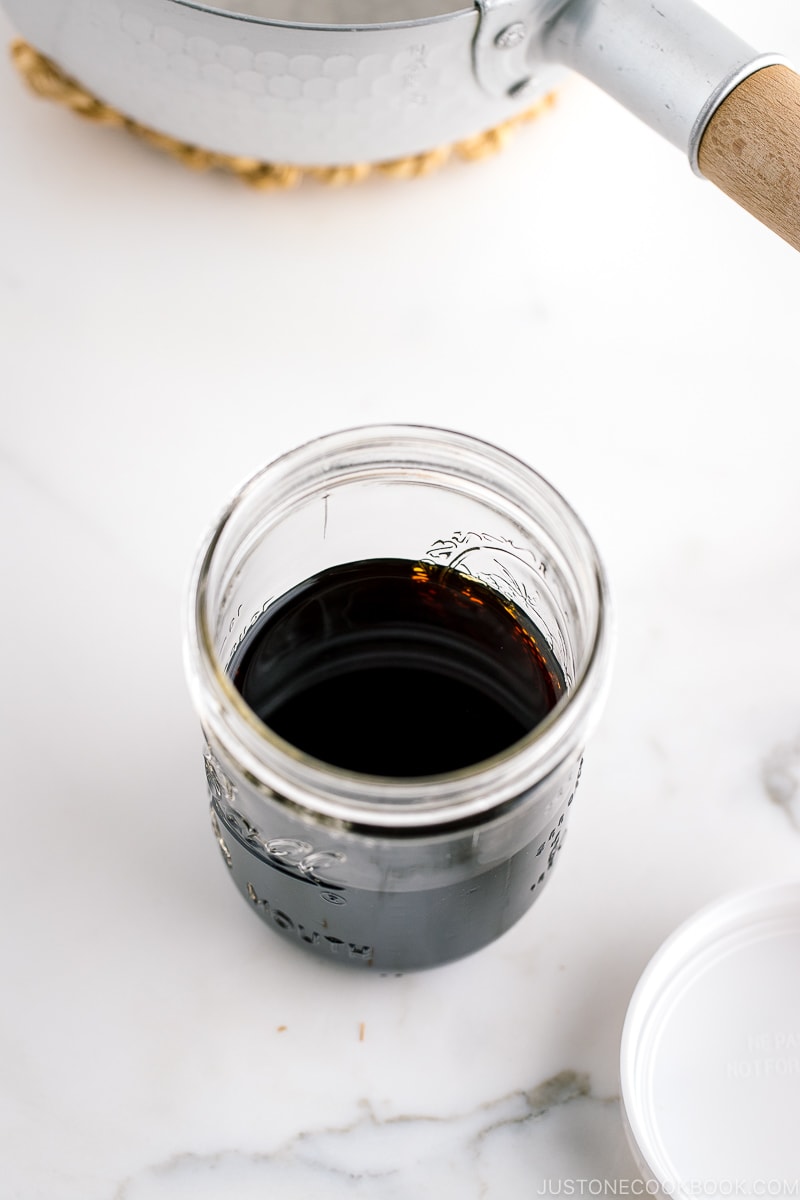
Mentsuyu (めんつゆ), or sometimes called Tsuyu (つゆ), is a Japanese soup base commonly used in soba and udon noodle dishes. Made from sake, mirin, soy sauce, kombu, and katsuobushi (dried bonito flakes), the flavor is delicate yet intensely savory.
Table of Contents
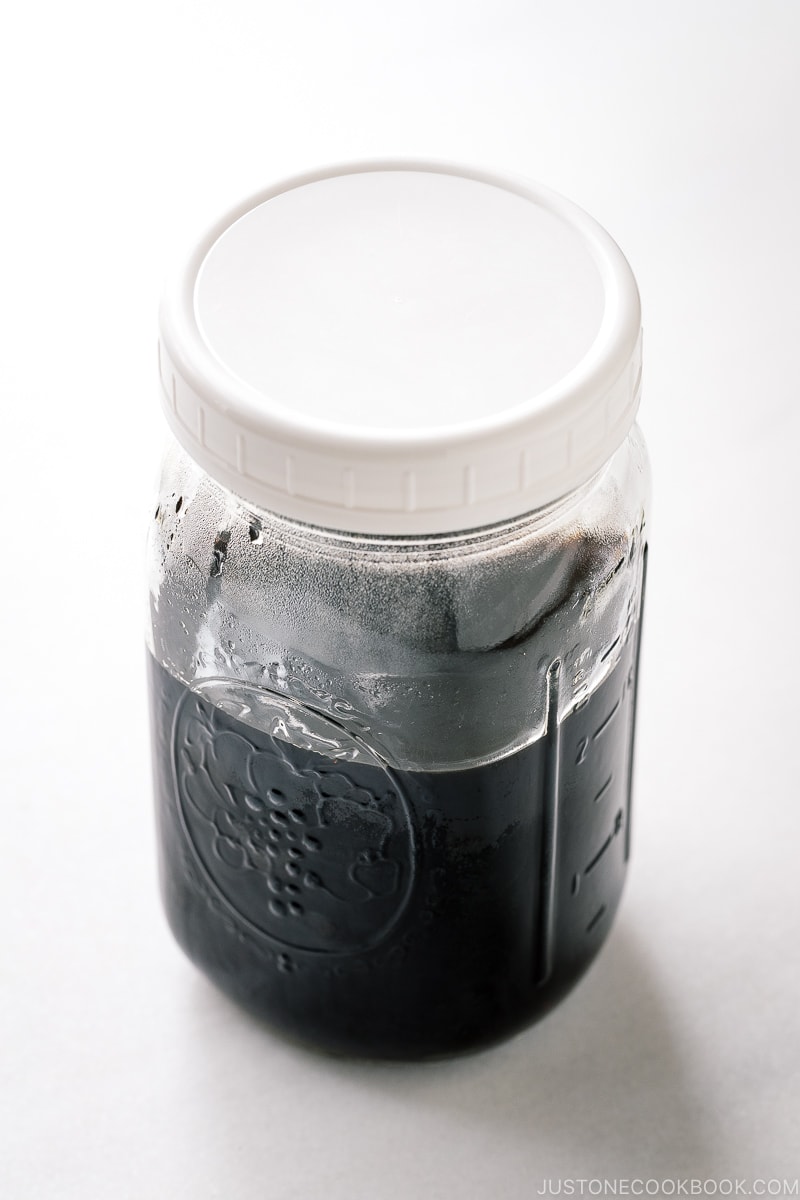
What is Mentsuyu (Tsuyu) for?
In Japan, we use Mentsuyu as a basic sauce or broth to flavor everything from noodle dishes, rice bowls, and hot pots to the tempura dipping sauce.
The multipurpose sauce gets a real depth of flavor and smokiness from the use of kombu and bonito flakes. As it happens, these two ingredients are the elementary components to make dashi—the Japanese soup stock that characterize the distinct flavor of Japanese food.
In this recipe, soy sauce contributes to the savory tones, and mirin imparts sweetness that ties everything together.
Making Mentsuyu at home is as easy as combining all the ingredients in a pot and letting it simmer down to a concentrated sauce. You can store it in a mason jar and keep it in the refrigerator for up to a month. The sauce will come in handy when you need it to season your favorite noodle dishes.
When ready to use, you just need to thin it out with water! The ratios of Mentsuyu to water will differ depending on the recipes.
Use Mentsuyu for Hot Noodle Soup
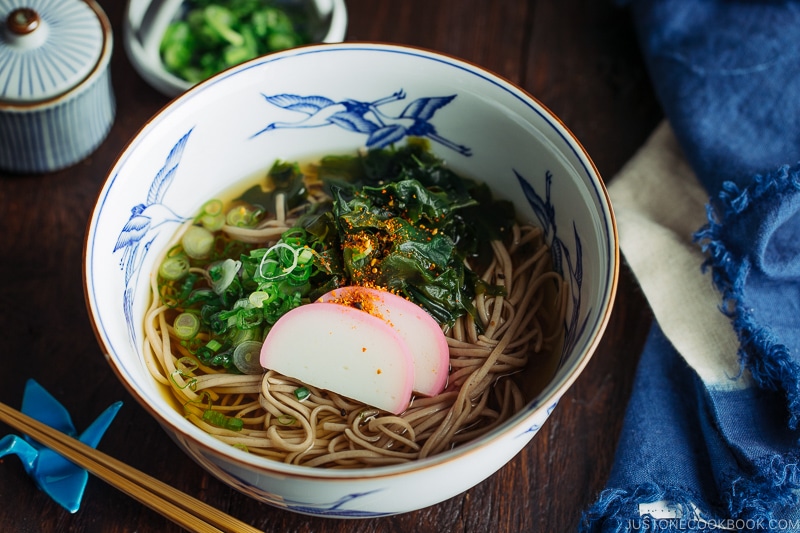
To use Mentsuyu in a hot noodle soup, dilute it with water, heat it up, then pour over boiled noodles. This hot noodle soup broth is called Kaketsuyu (かけつゆ).
Use Mentsuyu for Cold Noodle Dipping Sauce
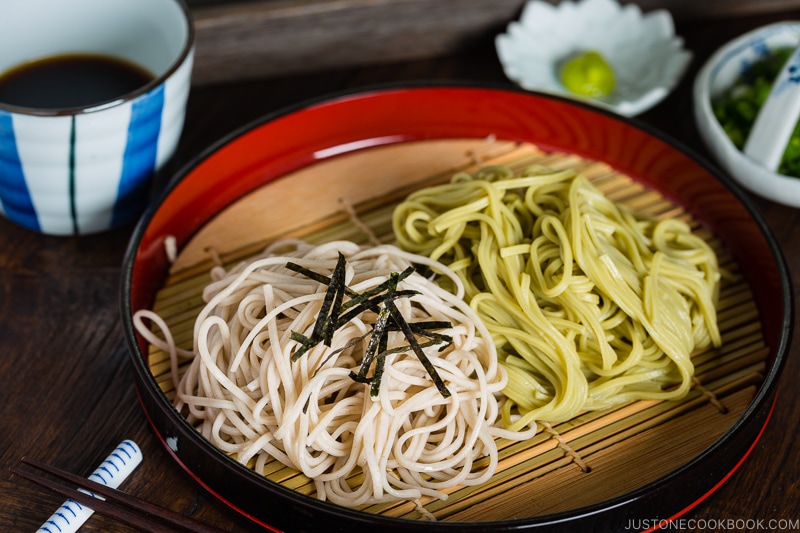
The Mentsuyu is diluted with water (sometimes no need to dilute), then serve with chilled noodles. This dipping sauce is called Tsuketsuyu (つけつゆ).
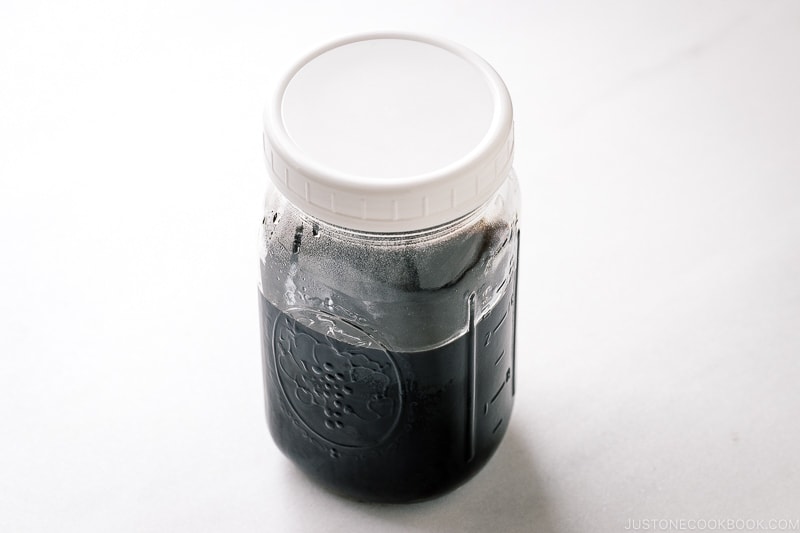
Convenient Store-Bought Mentsuyu Bottles
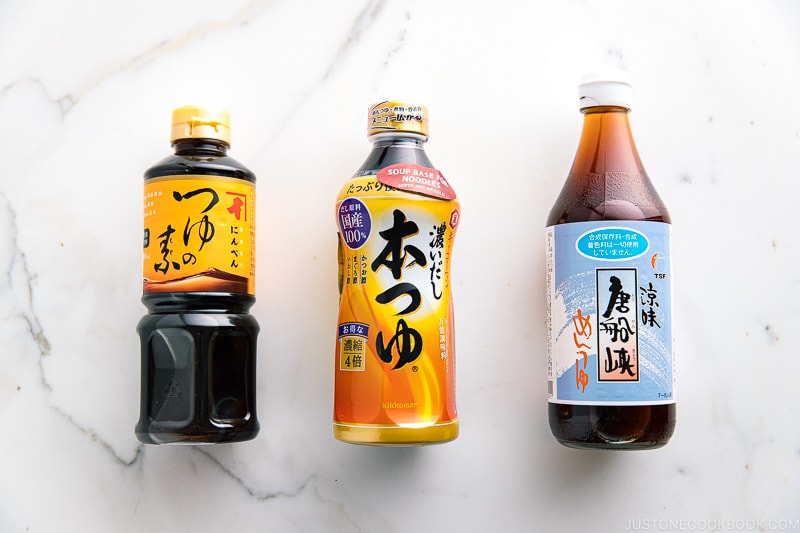
For convenience, you can purchase pre-made Mentsuyu from Japanese (or Asian) grocery stores or online.
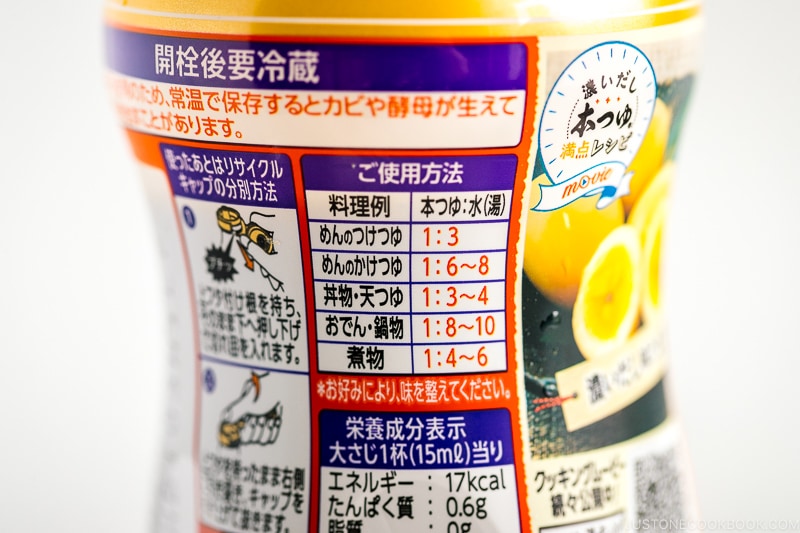
Each brand has different instructions for diluting the Metsuyu. Find the usage guide on the bottle that looks like this. You can learn more about the Ratio of Tsuyu to Water on this page.
Use Mentsuyu in These Recipes!
- Cold Tanuki Udon
- Tsukemen
- Zaru Soba
- Yaki Udon
- Mushroom and Tuna Japanese Style Pasta
- Hiyayakko (Japanese Cold Tofu)
- Kitsune Udon
- Negitoro & Avocado Donburi
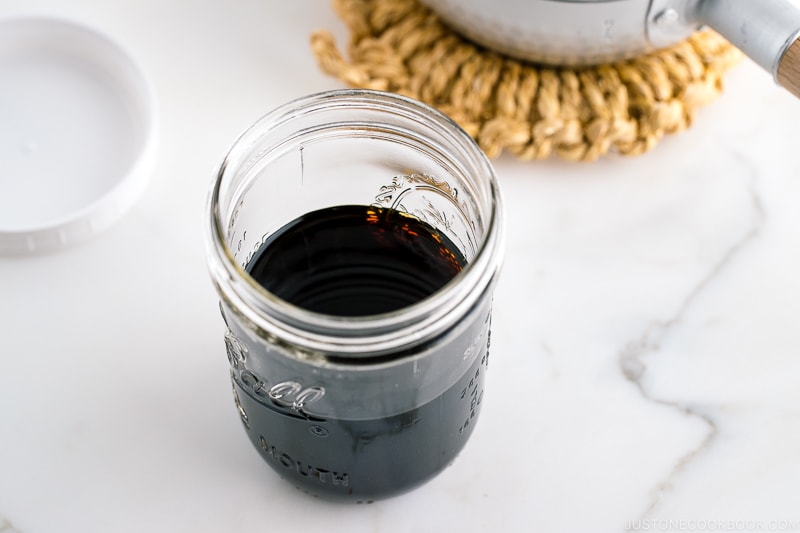
Wish to learn more about Japanese cooking? Sign up for our free newsletter to receive cooking tips & recipe updates! And stay in touch with me on Facebook, Pinterest, YouTube, and Instagram.
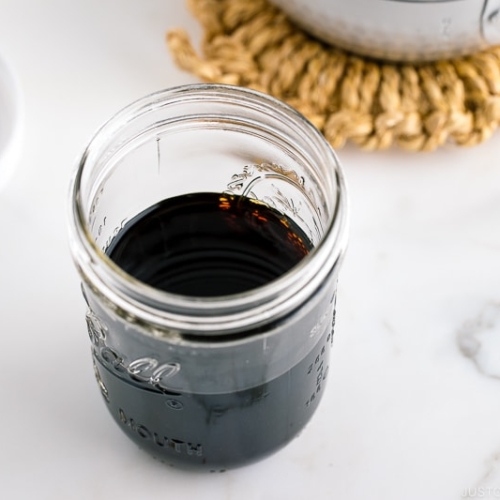
Homemade Mentsuyu (Japanese Noodle Soup Base)
Video
Ingredients
- ½ cup sake
- 1⅛ cup mirin
- 1 cup soy sauce
- 1 piece kombu (dried kelp) (5 g; 2 x 2 inches or 5 x 5 cm per piece)
- 1 cup katsuobushi (dried bonito flakes) (packed; omit for vegetarian/vegan or substitute 2 dried shiitake mushrooms)
Instructions
- Gather all the ingredients.

- In a saucepan, add ½ cup sake, 1⅛ cup mirin, and 1 cup soy sauce.

- Add 1 piece kombu (dried kelp) and 1 cup katsuobushi (dried bonito flakes).

- Slowly bring it to a boil over medium-low heat.

- Then, reduce the heat to low and simmer for 5 minutes. Then turn off the heat and let it cool.

- Pass the mixture through a fine-mesh sieve. Tip: Reserve the kombu and katsuobushi for another use (see below).

To Serve
- This Mentsuyu is concentrated. In general, the mentsuyu-to-water ratio should be 1:2 for a dipping sauce for cold Zaru Soba or Tanuki Udon and 1:4 for Udon Noodle Soup or Soba Noodle Soup. Please adjust the taste of your dipping sauce or soup broth by adding more mentsuyu or water.

To Store
- You can store the Mentsuyu in a mason jar in the refrigerator for up to a month.

To Repurpose the Spent Katsuobushi and Kombu
- Save the spent kombu and katsuobushi in an airtight container and store it in the refrigerator for a week or in the freezer for up to a month.

- Repurpose the spent katsuobushi and kombu to make Homemade Furikake (Rice Seasoning).

Nutrition
Editor’s Note: This post was originally published on July 16, 2013. It’s been republished on May 5, 2022, with updated step-by-step and final images.
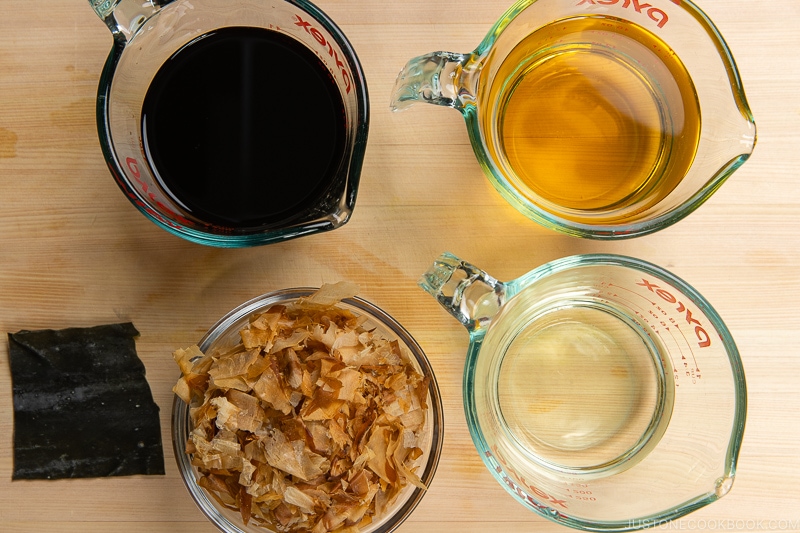
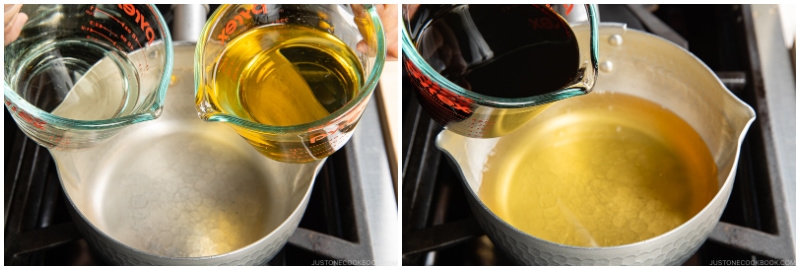
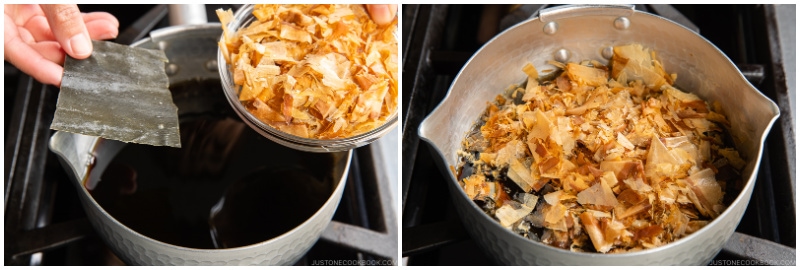
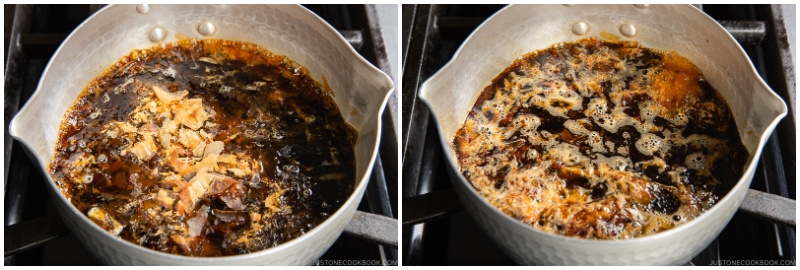
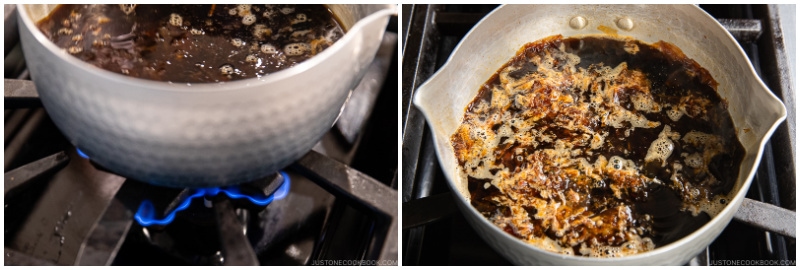
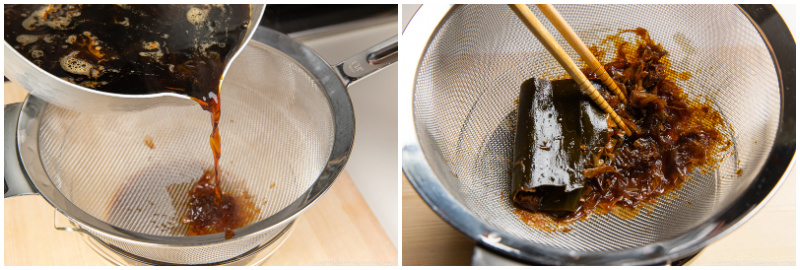
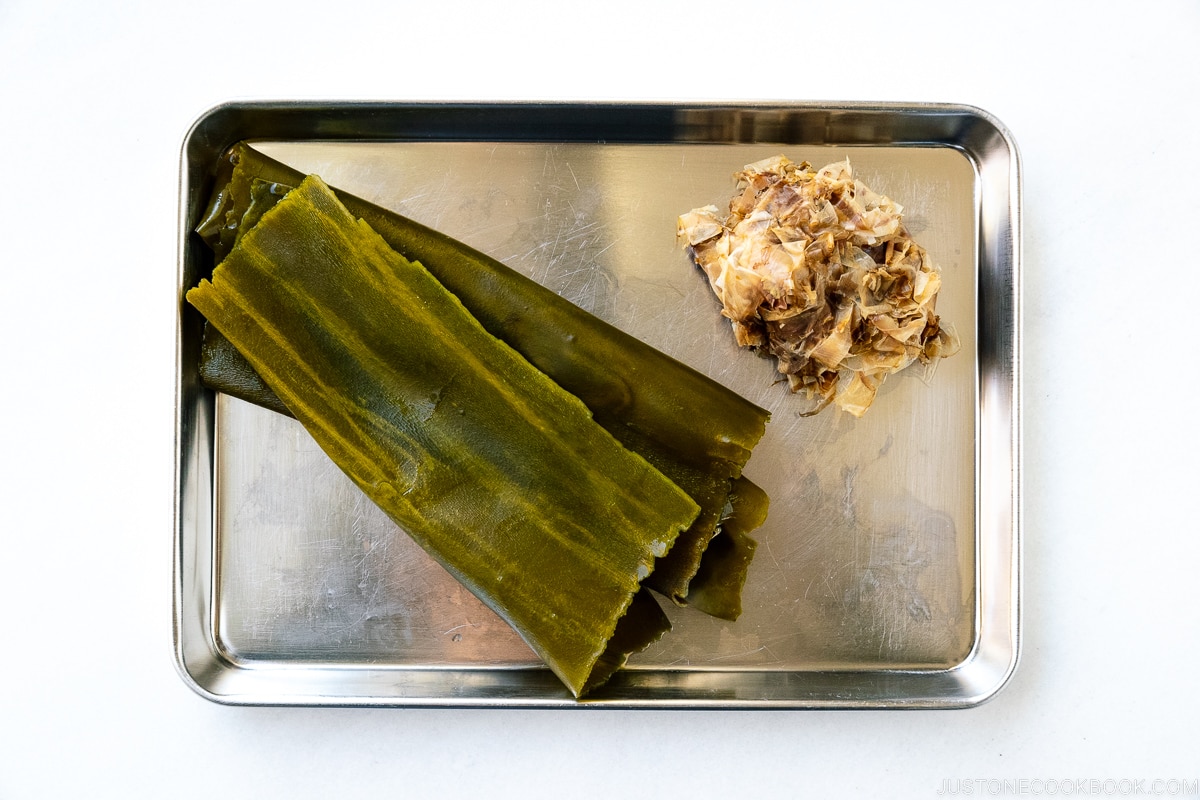











I made this today and it was absolutely stellar!! The taste is amazing and the measurements are accurate in the recipe. I did replace the Katsuobushi with ground sardine powder (purchased in Japan while I was traveling) since this is all I had at home. For the kombu, I had a similar type that was seasoned so I added in a smaller amount. I actually halved the recipe and it came out tasty. Thanks so much for sharing this recipe!!
Hello there! We are glad to hear you enjoyed the result!😊
Thank you so much for taking the time to read Nami’s post and for your feedback. Happy Cooking!
Does mentsuyu freeze well?
Hello, Sejal. Yes, you may freeze Mentsuyu.
Ice cube trays or other sealed containers work nicely for storing.
We hope this helps!
Nami, would you kindly weigh “1 cup of kotsuobushi ‘packed’ ” and let me know how many grams that is? I can only buy kotsuobushi in 100 gram bags. For dashi I use 1 liter of water, 25-30 grams of kombu and 33 grams of kotsuobushi. I didn’t want to mess up my dashi system. I used 33 grams of kotsuobushi for a 2x batch, so 1 cup of sake, 2.25 cups mirin and etc, with 33 grams of kotsuobushi. My finished mentsuyu tastes pretty OK to me, but I don’t have a frame of reference. Thanks.
Hi, Scott! Thank you for trying Nami’s recipe.
The weight measurement is available by clicking the Metric box at the top of the recipe card.
We hope this helps!🙂
My partner is gluten free, but she can have soba because soba noodles are traditionally gluten free. I would love to use this recipe to make Zaru Soba at home, but, of course, soy sauce also has gluten in it. Could I switch out the soy sauce for tamari? If I did that, would it just be a one to one replacement?
Hello, Collin! Yes, you may substitute Tamari for the soy sauce. Tamari, on the other hand, tastes less salty than soy, so you can add more if you like.
Thank you for trying Nami’s recipe! We hope you and your partner enjoy her recipe!
This recipe is a definite favourite of mine! Mentsuyu is something I use a lot, for example quick udon broth, dipping sauce for soumen, as a marinade, and a topping for cold tofu (I like spring onions and kimchi with a little concentrated mentsuyu.) Such a versatile base. Thank you for sharing this recipe!
Hi Lee! Wow! Thank you so much for your compliment!
We are glad to hear you enjoyed Nami’s recipe! 😊
Hi, this recipe looks so good! Is it possible to make this without alcohol, without the sake and mirin? (I know, sounds crazy, but I don’t want alcohol in my meal)
Hello Amy! We appreciate you giving Nami’s recipe a try.
If you’re looking for a non-alcoholic option, the flavor will be a bit different, but you may use non-alcoholic Mirin (みりん風調味料) and use water instead of sake.
For more information on non-alcoholic Mirin, you can check out this post: https://www.justonecookbook.com/mirin/
We hope this suggestion is helpful to you!
Hello Nami and JOC folks! Thank you for your time and hard work on this wonderful site!
Question: If I am unable to find kombu and Katsuobushi, but I don’t want to use dried shiitake, may I use dashi powder instead? And if so, how much is recommended for this recipe?
Thank you again!
Hello, Piper! Thank you so much for taking the time to read Nami’s post and for your kind feedback!
If you’re using Dashi powder, start with 3 g and see how it goes. You may modify the flavor by adding more or a little sugar.🙂
We hope this helps!
One question: Here it says we use “1⅛ cup mirin“; however, the Zaru Soba recipe has a section for Homemade Mentsuyu and says “½ cup mirin (+ 1 Tbsp, to taste)”. Are they different? Should I go with this one for anything that is not zaru soba? Or is it based on personal taste?
Personally, I tried the one on the zaru soba recipe and tastes good, but now I’m wondering what’s the correct mirin portion.
I appreciate all the work you folks put in this site, I’ve been enjoying all the recipes!
Hello, Edwin! Thank you so much for taking the time to read Nami’s posts and try her recipes!
We’re delighted you’re enjoying Nami’s recipes.
This Mentsuyu recipe is basic (standard).
Tsuyu for Soba is typically saltier than Tsuyu for other noodle types, such as Somen; however, this can be a personal preference.
The Zaru Soba recipe is customized to Nami’s preferences.😉
We hope this was helpful!
I have a question about the repurposed kombu and bonito flakes. Having made my own furikake I noticed all the ingredients were dry. Does this mean I need to dry out the kombu and bonito first? Appreciate your advice.
Hello, Heidi. Furikake may be made without drying the Kombu and Bonito flakes.
Here’s Nami’s Furikake recipe; we hope it’s useful!
https://www.justonecookbook.com/homemade-furikake-rice-seasoning/